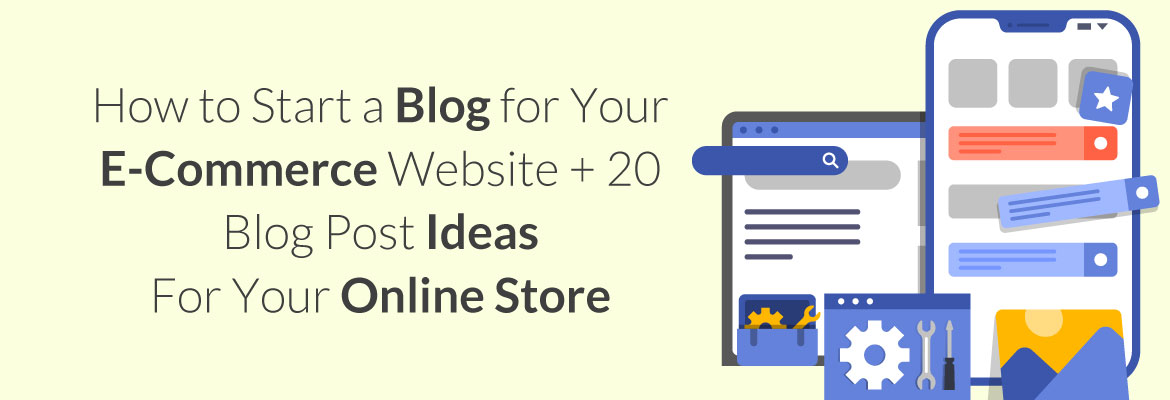How to Start a Blog for Your E-Commerce Website + 20 Blog Post Ideas for Your Online Store

Have you launched your business blog yet? A blog allows you to communicate with your customers, build a community, share your own stories, and strengthen your brand equity. Running a blog for your online store website is also an effective form of content marketing, which in turn will boost your search engine optimization (SEO), making your website more visible to customers on Google, Yahoo, and Bing. It can be challenging to keep up with a blog and write new content on a regular basis, but the hard work will pay off. Here are a few tips on how to get started with your e-Commerce blog.
Think about your specific niche and audience
Before you start planning out your blog or the type of content you want to put out, you need to consider who your audience is. You need to write blog posts that will cater to your target audience and users of the products you sell on your online store website. For example, do you sell vegan food/health products? Then your target audience will be those who practice a vegan lifestyle. Focusing your content on vegan news and trends, how your products promote a healthy or vegan diet, and cooking tutorials/recipes would all be great examples of creating content for your niche. Also, consider how you can use blog posts to create a stronger presence on your social media pages.
Start researching keywords and search trends
The key to an effective content marketing strategy is to make sure that your blogs are search engine optimized as much as possible, so that your content will show up when your future customers make searches on Google, Yahoo, or Bing related to your business or products. To do this, you’ll want to stay up to date on keywords and search trends. Keywords are words or phrases that people use when they make searches online. Try using tools such as Google Keyword Planner to find keywords related to your business and the products/services you sell. If your online store website sells candles, your keywords might include keywords like “best candles on sale,” “where to buy candles online,” and “cheap candles.”
Strategize how to use keywords to boost your SEO
Once you’ve done your keyword research, consider ways to incorporate them in your blog posts and content. For example, if your e-Commerce website sells candles and you want to use a group of related keywords for one blog post, you could write a blog post about pumpkin spice candles and use keywords throughout the post, such as “best pumpkin spice candle,” “pumpkin spice candles on sale,” and “where to buy pumpkin spice candles.”
You could also consider sprinkling in keywords throughout a blog post, as long as you’re strategic about it. Generally, your main keyword should show up in the title of your blog, in the first sentence, and 3-4 more times throughout your blog. Be sure not to overuse keywords, or else you may get flagged for spam.
Lay out your plan to create unique, original content
Your e-commerce blog will serve as an extension or communications outlet for your business. Here are some blog post ideas to help you get started:
- Seasonal blog posts
- Industry news/trends
- Online shopping guides
- Unique gift ideas list
- Guest blogging for product reviews
- How-tos and tutorials on using your products
- Create a video ad
- Interview an expert in the field
- Show off new products
- News about your company
- Solve a common problem with your product
- Answer customer questions
- Staff picks and recommendations
- Tour of your office(s)
- A photo gallery or slideshow
- Quizzes
- A day in the life of a staff member
- The history of your business
- Featured product of the week
- Giveaways
Create a schedule for your blog posts
Decide how often you want to write content for your blogs and how often to post them. This could depend on if you’re a one-person operation or if you have a full-fledged marketing team. Just do whatever works for you and your eCommerce store! Be sure to consider the timing of your blog posts and your blog topics, social media content, email marketing content, and other factors as you schedule out your blogs.